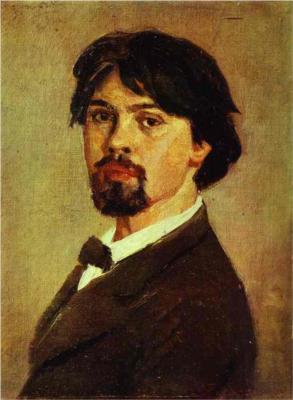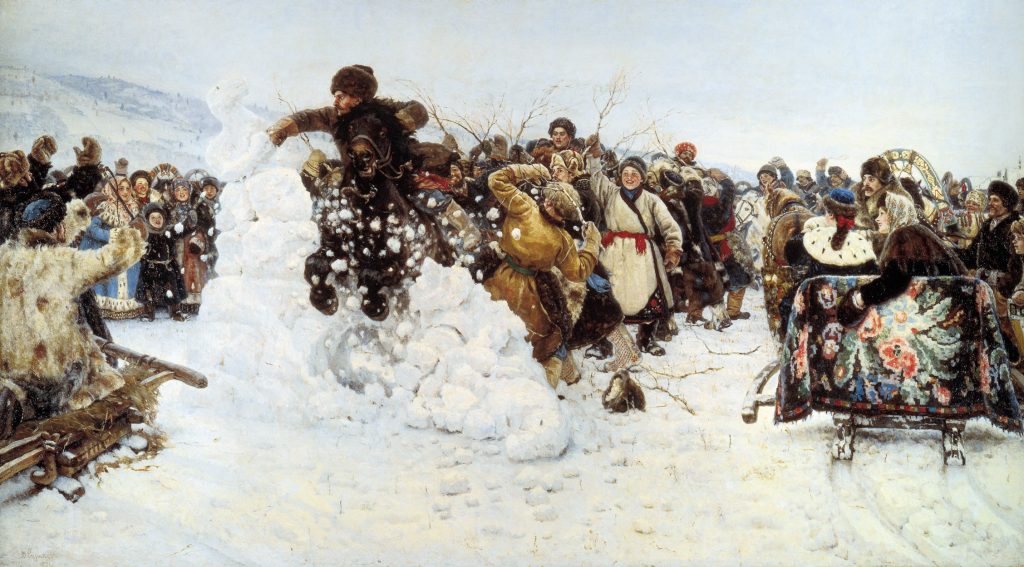Vasily Surikov is one of the two greatest Russian history painters that ever lived. His contemporary, Ilya Repin, is the other half of this pair of talented Russians who have contributed much to the world of art. He was born a Siberian Cossack in the town of Krasnoyarsk but eventually moved to St. Petersburg, and then to Moscow. He painted several landscapes and portraits, but what he was really known for was his large-scale historical paintings.
Life and Career
Surikov was brought up in the freezing Siberian environments of Krasnoyarsk. He was six when he heard the calling of art. “I was six,” he recalled “I drew Peter the Great from an engraving. The colors I did myself: blue for the uniform and crimson for the lapels.”
His teacher, N.V. Grebnev, was the first one who discovered his talent for art. When he graduated from school in 1868, he traveled to St. Petersburg and joined the Imperial Academy of Arts after a year of travel. There he studied under the supervision of Pavel Christyakov for six years. It was also here that he painted The Knyaz’s Court of Law in 1874. After he graduated from the Imperial Academy in 1875 he moved to Moscow, where he received commissions from the Cathedral of Christ that involved 4 fresco paintings. He eventually settled there and married Elizabeth Charais.
Moscow’s art, the Muscovite architecture of the old monuments, was an inspiration to Surikov. He had this inspiration when he started painting The Morning of the Execution of the Streltsy, which was considered by many to be his masterpiece. The work started in 1878 and ended in 1881, and the subject of the painting became the subject that he would be famous for: the most historic moments for the Russians. In this specific work, he envisioned a moment during the Petrine era, during the reign of Peter the Great. He and many Russians at the time considered that moment in Russian history as important in the progress of its culture. It was also when Russia was trying to draw the line between individual’s rights and state powers. The Boyarina Morozova, which is a work he made 6 years after finishing The Morning of the Execution of the Streltsy, is another work from that era. In both works, he skillfully depicted the faces and the emotions of those caught in the events and showed accurate knowledge of history. In 1883 he executed the Menshikov at Beriozov, which depicted Peter the Great’s favorite courtier in exile to Siberia.
He was very active in the early 1880’s and was a part of several art circles. He also joined The Association of Travelling Art Exhibitions, also known as the Itinerants. Surikov sold his works to a well-known Russian art collector, Pavel Mikhailovich Tretyakov, and with the proceeds, he toured many European countries and studied the Old Masters’ art. He also studied many of the artworks made by his European contemporaries.
Later Years
The Taking of The Snow Fortress, made in 1891, was a painting he made after the death of his wife in 1887. Saddened by the loss, he took his children back home to Siberia. To help him recover from the pain his brother told him to paint a Cossack tradition: “the storming of a snow fortress.” The Taking of The Snow Fortress was recognized as the most-lighthearted work he ever made.
He eventually recovered from his loss and went back to Moscow. There he created The Conquest of Siberia by Yermak, which depicts a fight between Kuchum-Khan, who was the king of Siberia against the Cossacks. He soon followed that up with other painting like Russian Troops under Suvorov Crossing the Alps in 1899 and Stepan Razin in 1906. Finally, in 1916, when he was 68 years old, Surikov died in Moscow.
Surikov changed the meaning of historical painting in Russia. He showed skill and good knowledge of how to use linear perspective. He was able to depict the subjects of his work quite realistically, with the clearest facial expressions. And even though there were only nine of those historic paintings he made he was still given the title of Russia’s greatest historical artist.
Featured and 1st image: self-portrait by Vasily Surikov
2nd image: The Taking of The Snow Fortress by Vasily Surikov via Wikipedia

